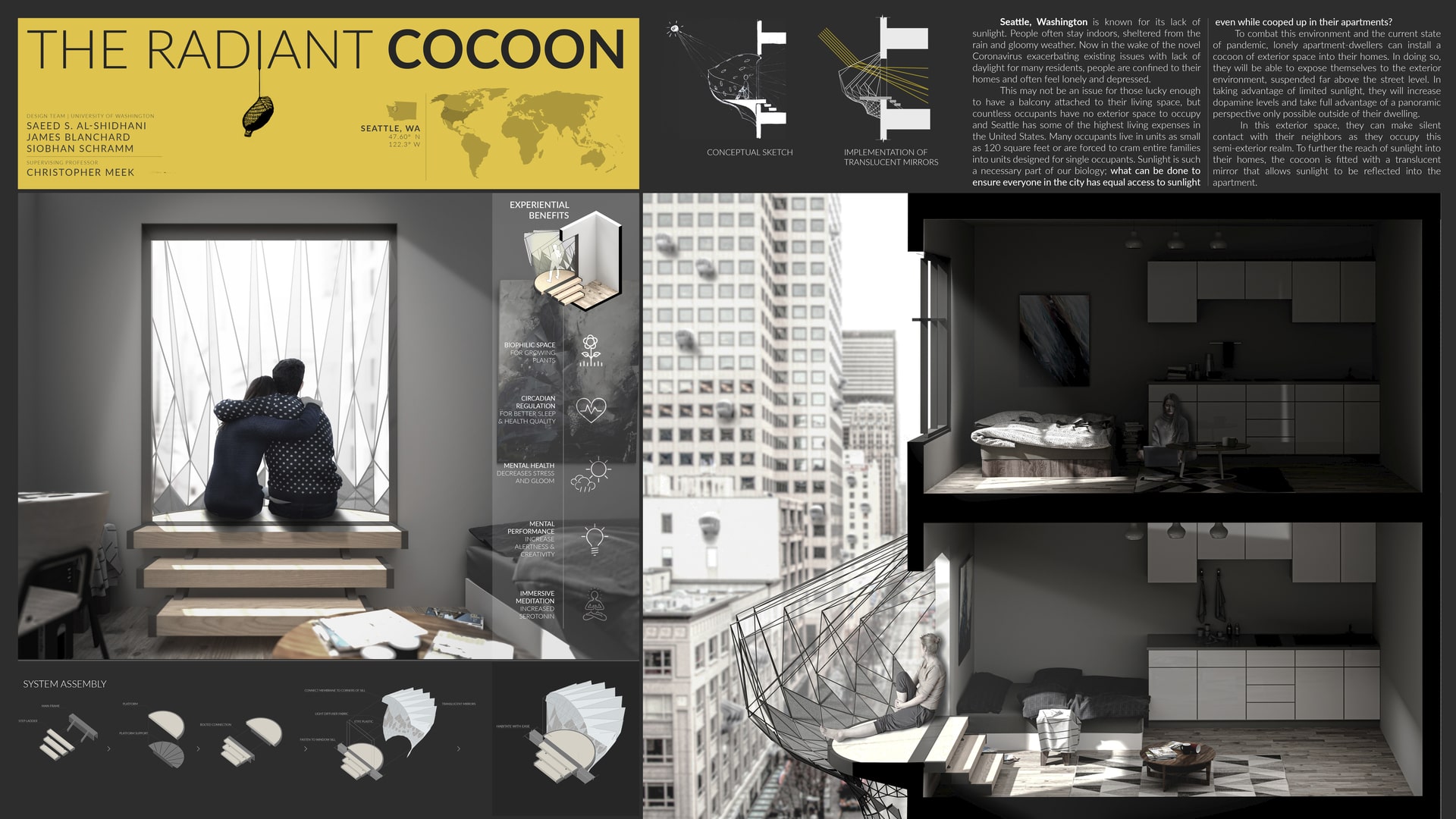Project Description
Situation - Seattle, Washington is known for its lack of sunlight. People often stay indoors, sheltered from the rain and gloomy weather. Now in the wake of the novel Coronavirus exacerbating existing issues with lack of daylight for many residents, people are confined to their homes and often feel lonely and depressed. This may not be an issue for those lucky enough to have a balcony attached to their living space, but countless occupants have no exterior space to occupy and Seattle has some of the highest living expenses in the United States. Many occupants live in units as small as 120 square feet or are forced to cram entire families into units designed for single occupants. Sunlight is such a necessary part of our biology; what can be done to ensure everyone in the city has equal access to sunlight even while cooped up in their apartments? Proposal - To combat this environment and the current state of pandemic, lonely apartment-dwellers can install a cocoon of exterior space into their homes. In doing so, they will be able to expose themselves to the exterior environment, suspended far above the street level. In taking advantage of limited sunlight, they will increase dopamine levels and take full advantage of a panoramic perspective only possible outside of their dwelling. In this exterior space, they can make silent contact with their neighbors as they occupy this semi-exterior realm. To further the reach of sunlight into their homes, the cocoon is fitted with a translucent mirror that allows sunlight to be reflected into the apartment. Use of the Product- After an occupant installs the cocoon structure from their window, the occupant has an opportunity to tend a small greenhouse, extend their workspace, or to meditate in the daylight. In addition to taking advantage of limited sunlight, the cocoon also creates an enjoyable experience when it rains. An occupant can feel secure and warm in their interior environment, while hearing the soothing pitter-patter of the water droplets as the rain washes down the ETFE membrane. More than anything, this space is adaptable to whatever use the occupant has in mind. Development - The cocoon developed from the fact that people feel isolated in a time of social distancing. This product introduces a way to regain some semblance of normal life, exposing yourself and your interests to your neighbors who are also feeling isolated. In quiet moments, people watching can allow us to feel more connected with our surroundings and provide some much-needed sunshine and entertainment. Though this product is designed for Seattle’s climate, it is flexible enough to be installed into a variety of window sizes throughout the United States. What would you do with a little pocket of exterior space?
